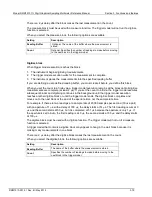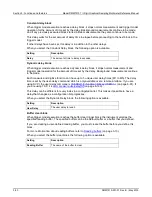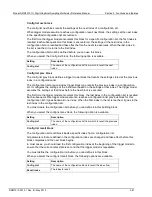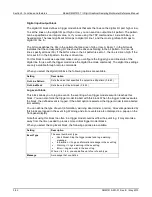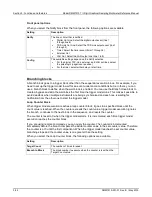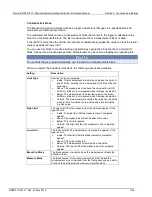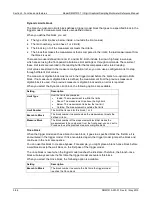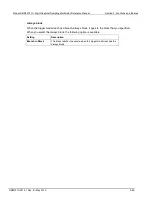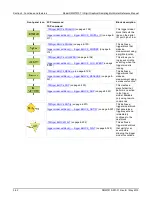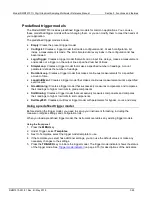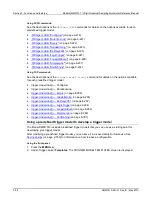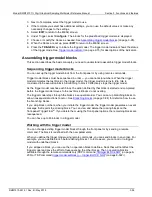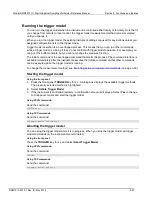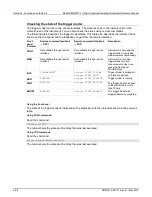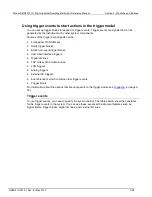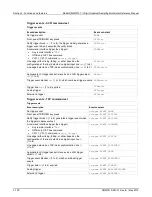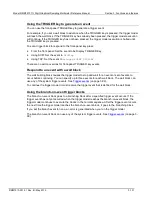
Section 3: Functions and features
Model DMM7510 7½ Digit Graphical Sampling Multimeter Reference Manual
3-86
DMM7510-901-01 Rev. B / May 2015
Dynamic Limits block
The branch-on-dynamic-limits block defines a trigger model block that goes to a specified block in the
trigger model if a measurement meets user-defined criteria.
When you define this block, you set:
•
The type of limit (above, below, inside, or outside the limit values)
•
The limit number (you can have 1 or 2 limits)
•
The block to go to if the measurement meets the criteria
•
The block that makes the measurement that is compared to the limits; the last measurement from
that block is used
There are two user-defined limits: limit 1 and limit 2. Both include their own high and low values,
which are set using the front-panel Calculations limit settings or through commands. The results of
these limit tests are recorded in the reading buffer that accompanies each stored reading.
Limit values are stored in the measure configuration list, so you can use a configuration list to step
through different limit values.
The measure or digitize block must occur in the trigger model before the branch-on-dynamic-limits
block. If no measure or digitize block is defined, the measurement from the previous measure or
digitize block is used. If no previous measure or digitize block exists, an error is reported.
When you select the Dynamic Limit block, the following options are available.
Setting
Description
Limit Type
How the limits are compared:
•
Inside: The measurement is within the limits
•
Above: The measurement is above the high limit
•
Below: The measurement is below the low limit
•
Outside: The measurement is outside the limits
Limit Number
The limit that is used for this block, 1 or 2
Branch to Block
The block number to execute when the measurement meets the
defined criteria
Measure Block
The block number of the measurement block that makes the
measurement to be compared; from the front panel, you can set to
Previous to use the previous measure or digitize block
Once block
When the trigger model reaches a branch-once block, it goes to a specified block the first time it is
encountered in the trigger model. If it is encountered again, the trigger model ignores the block and
continues in the normal sequence.
You can use this block to create a bypass. For example, you might place a branch-once block before
a wait block to skip the wait block on the first pass of the trigger model.
The once block is reset when the trigger model reaches the idle state. Therefore, the branch-once
block will always execute the first time the trigger model encounters this block.
When you select the Once block, the following option is available.
Setting
Description
Branch to Block
The block number to execute the first time the trigger model
reaches the Once block








